NYC’s Forgotten ‘War on Christmas Trees’
Discover how an obscure holiday crackdown affects festive street vendors today!


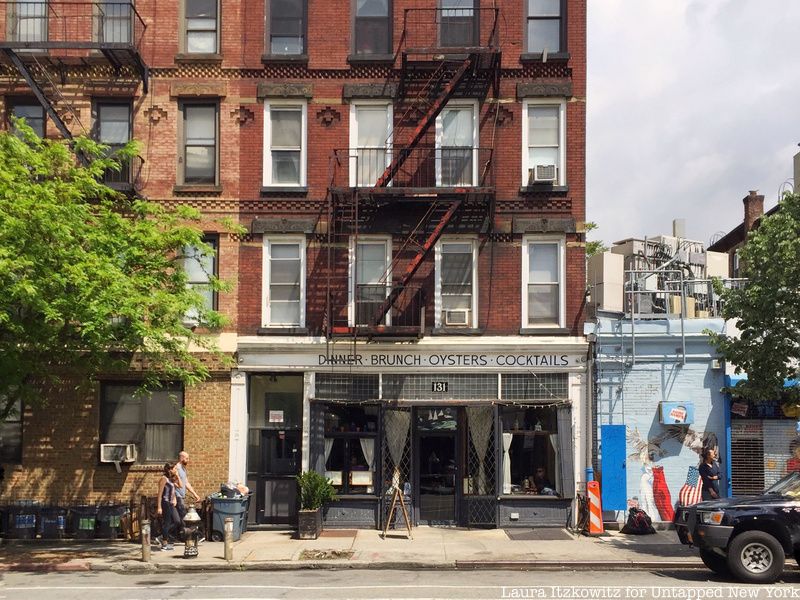
Like neighboring Williamsburg, Greenpoint has been gentrifying for the past decade or so. Hip restaurants, bars, and boutiques line streets like Franklin and Manhattan Avenues, with more new spots reaching the neighborhood’s northernmost tip and high-rise condos being erected along the waterfront. Though the pace of development has been a bit slower in Greenpoint than in Williamsburg, due in part to the dearth of transit options, the neighborhood is evolving, as it has several other times over its long history.
The northernmost part of Brooklyn, Greenpoint is separated from Queens by Newtown Creek and bordered on the south and southeast by Williamsburg and Bushwick. It was originally inhabited by the Lenape Native Americans and became part of Bushwick during the days of Dutch New Amsterdam. In 1834, it became part of Brooklyn, which became a borough of New York City in 1898. In its earliest days as a Dutch settlement, the bucolic neighborhood was characterized by fields and orchards. It gets is name from a piece of land jutting out into the East River that to sailors passing by literally appeared to be a green point.
The mid to late 1800s saw Greenpoint become a bustling center for industry, with everything from ship building to oil refineries and porcelain makers located along the waterfront. By the 1870s, residents were already complaining of foul smells. Waste from the factories spilled out into the East River and Newtown Creek, which became one of the city’s most polluted waterways. Industrial production declined in the 1960s, and parts of the neighborhood became neglected, industrial wasteland until the creative renaissance in Williamsburg began spreading north into Greenpoint.
Even if you think you know everything about Greenpoint, you might be surprised by some of the quirky finds we dug up. From where to find some of the best Polish food in NYC to a boat club that takes people kayaking on the East River, here are 10 intriguing secrets of Greenpoint.
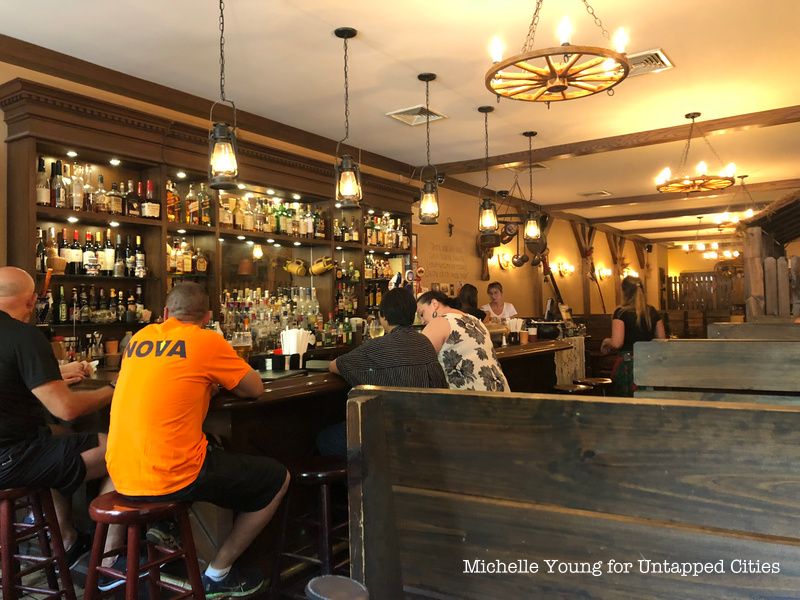
Ever since the early days of Greenpoint’s industrialization, immigrants formed much of the neighborhood’s workforce. Until about the 1880s, the neighborhood was populated mostly by people of Anglo-Saxon, Dutch, and French descent, but in the late 19th century, immigrants from Russia, Hungary, Slovakia, and Poland began moving in, eventually earning the neighborhood the nickname Little Poland.
Though the Polish community has been dwindling, with many Polish families and businesses priced out, a number of Polish restaurants and meat markets are still going strong. One of the best is Karczma, where waitstaff dressed in traditional outfits serve pierogies and borscht in a rustic space that looks like a Polish farmhouse. Other places to eat Polish food include Christina’s, which is known for hearty dishes in a diner-esque space, Krajan Polskie Deli, which sells bread, meat, cheeses, and pre-packaged foods as well as made-to-order authentic Polish food, and Polka Dot, a family-owned spot known for its good vegan and vegetarian options.
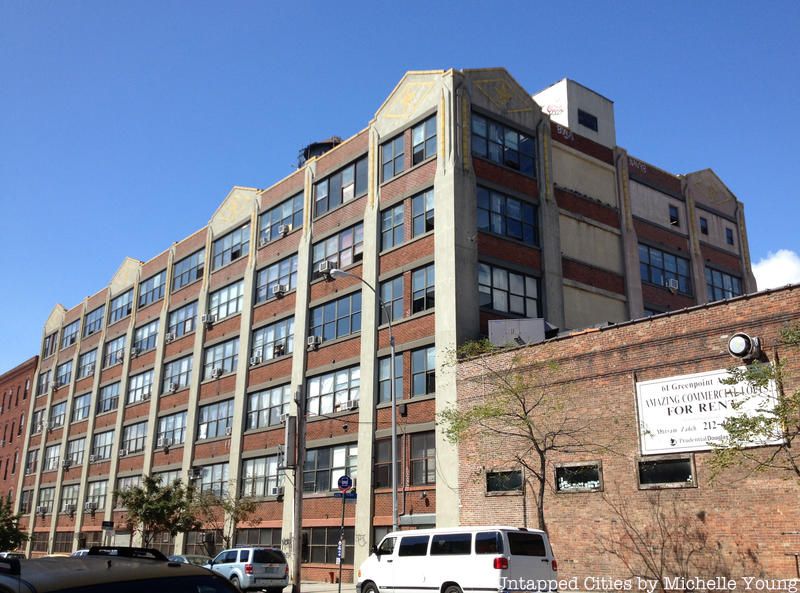
If you’ve ever passed by the building colloquially known as the Pencil Factory, you might have noticed the large pencils that still decorate uppermost floor of the building’s facade. Constructed in 1923-24, this building was the newest of the factories that form the Eberhart Faber Pencil Factory Historic District. Consisting of just eight buildings and one freestanding wall, it’s one of New York City’s smallest historic districts.
Most of the buildings in this district were constructed between the mid-1880s and the 1910s and were designed in the German Renaissance Revival Style. The German pencil producer Eberhart Faber moved to Greenpoint after a 1872 fire ravaged his factory on East 42nd Street and constructed the six-story factory that employed hundreds of people, including many women. According to Atlas Obscura, Eberhart Faber moved its operations to Pennsylvania in 1956. Today the building houses condos and offices, and for a while it was home to a yoga studio.
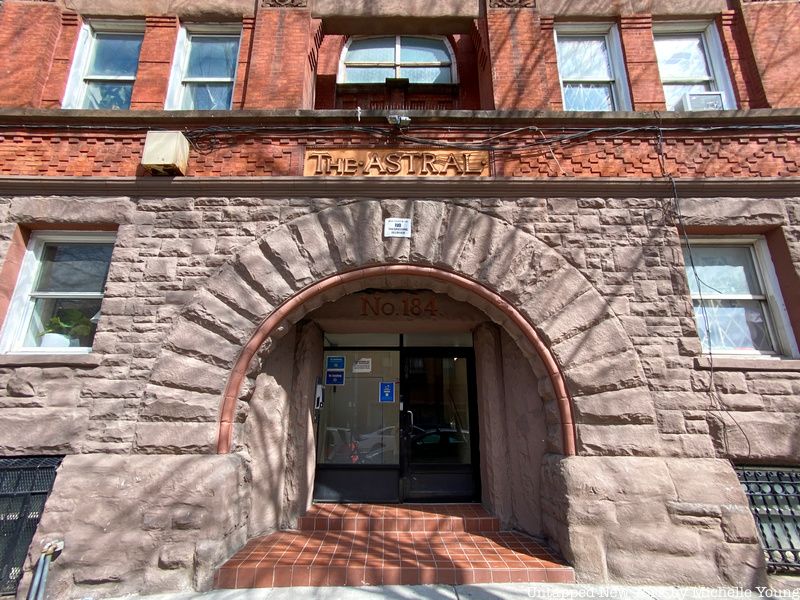
It’s a bit ironic that residents of the Astral Apartments on the corner of Franklin Avenue and India Street have had some major issues with the building’s management over the last few years because the building was constructed by oil baron Charles Pratt, founder of Astral Oil Works, for the purpose of uplifting his workers’ lives. Listed on the National Register of Historic Places, the Astral was built in the 1880s in the Queen Anne style with red brickwork and Victorian flourishes. It was designed by Lamb & Rich, the architecture firm behind Teddy Roosevelt‘s country house in Oyster Bay, Milbank Hall at Barnard College, and the main building at Pratt College.
Referring to Pratt, the Bowery Boys explain in their podcast, “he had this belief that you could eradicate poverty and crime if you gave people better living conditions, and so he built this structure.” When it opened, it not only had indoor plumbing and bathrooms—unheard of for working-class tenants at the time—but also social services like daycare.
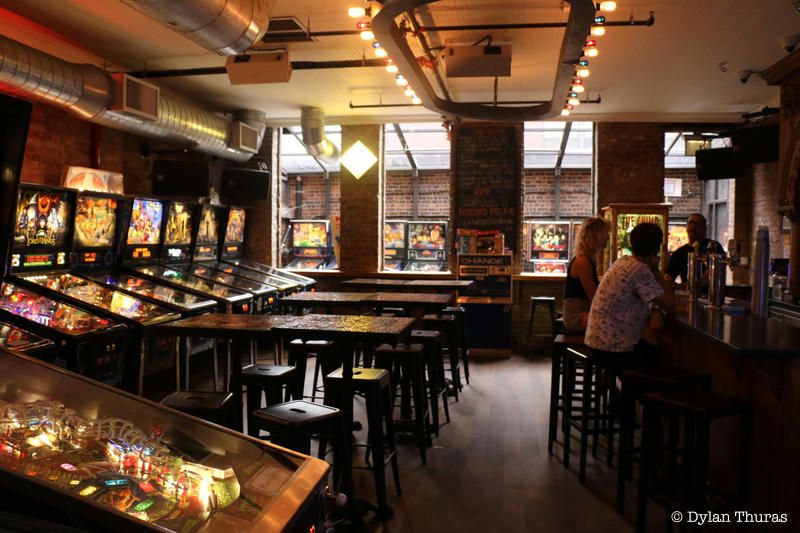
There are plenty of hidden bars in New York City, but Sunshine Laundromat & Pinball on Manhattan Avenue has to be one of the most unique. Up front, it’s a regular old laundromat, but walk through the “VIP entrance” and you’ll find yourself inside a dimly lit bar full of pinball machines. There’s a selection of craft beer on tap, including Greenpoint Beer & Ale Company’s Milk & Honey, as well as bottles and cans like Tecate and Evil Twin IPA.
The bar is currently closed due to COVID-19, but hopefully it will reopen soon. Drinking craft beer while playing pinball is certainly the funnest way to kill time at the laundromat while you wait for your laundry to finish the spin cycle.
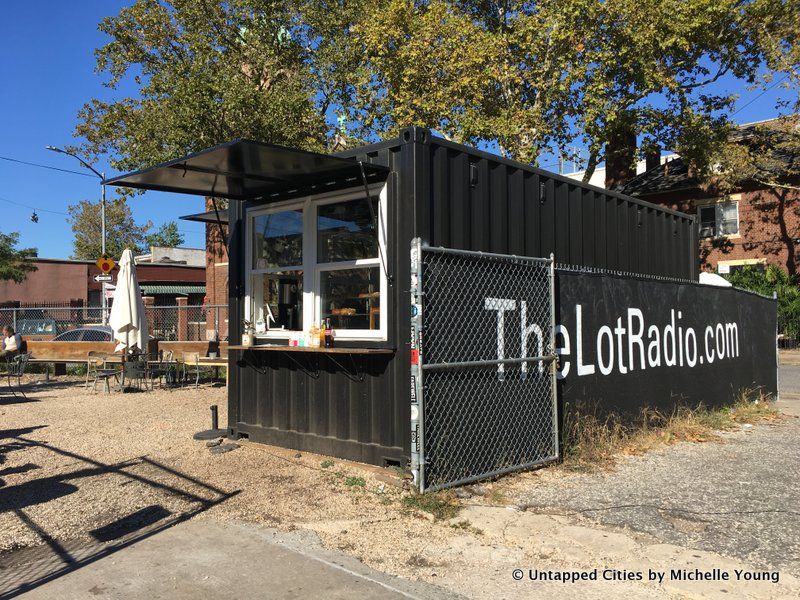
Vacant lots are becoming fewer and farther between, but the Lot Radio still stands on a little triangular empty lot just behind McCarren Park. Occupying a recycled shipping container, the independent, non-profit radio station streams music 24 hours a day. Different DJs come spin tunes and you can see the schedule on their website.
The Lot Radio serves coffee, tea, beer, wine, and snacks out of a kiosk on one side of the shipping container. They also sell merch like t-shirts and tote bags to support the radio station. Founder Franćois Vaxelaire told Untapped, “I wanted to show that it’s still possible to do something alternative and independent in Brooklyn. Not everything is business.”
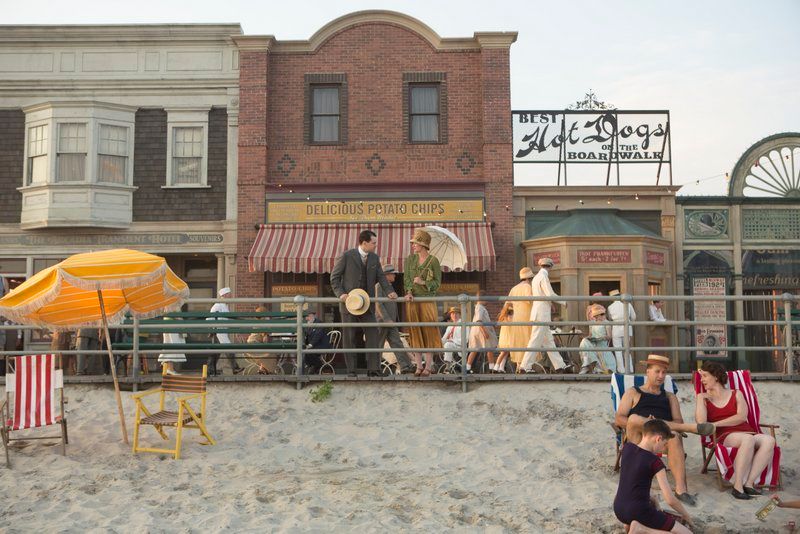
While manufacturing industry left Greenpoint in the 1960s, there’s been a recent revival in newer types of industry in the neighborhood. Tech companies like Kickstarter have taken up office space in Greenpoint and the neighborhood is also home to one of the largest film production studios in New York City.
Broadway Stages is located on land that was once occupied by John D. Rockefeller’s Standard Oil Company, bordering Newtown Creek. The land—both above and below ground—was highly polluted because of a major oil spill in 1979, but ExxonMobil, one of the sub-companies that Standard Oil was divided into following the Sherman Antitrust Act of 1890, installed lights and sidewalks during the land remediation process. Broadway Stages has been used to film hit shows like Boardwalk Empire, Gotham, The Good Wife, and Royal Pains.
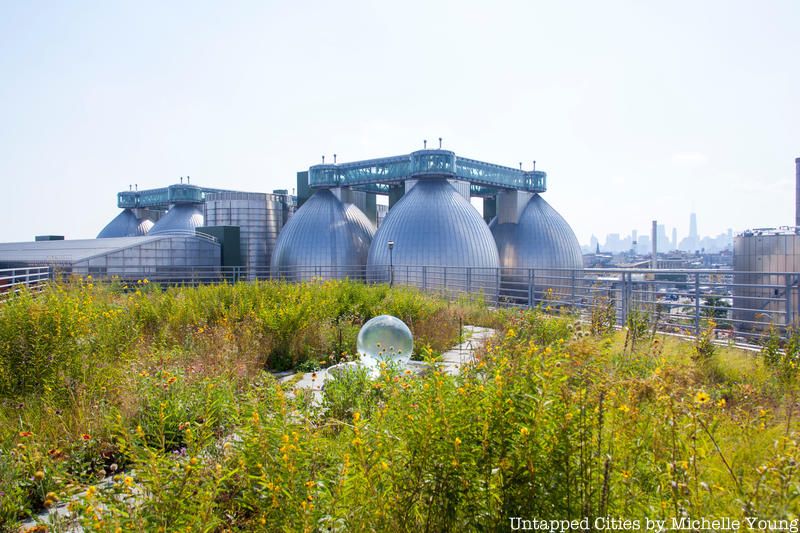
At the northeastern tip of Greenpoint, the former facilities of Standard Oil once encompassed fifty acres of former marshland along Newtown Creek.Several decades of mishandling resulted in a century of accumulated oil contamination and a fire in 1919 caused a loss of 110 million gallons of oil. But amidst the foreboding landscape of the Greenpoint oil spill zone, glimpses of nature can be found.
One such place is Kingsland Wildflowers, a lush series of green roofs hidden atop Broadway Stages, one of the largest television and film production companies in New York City. Funded predominantly by the Greenpoint Community Environmental Fund, a grant program created from an ExxonMobil settlement, and Broadway Stages, Kingsland Wildflowers was conceived by Marni Marjorelle, the owner and founder of Alive Structures green roofing company, in partnership with NYC Audubon and Newtown Creek Alliance. In addition to monitoring wildlife populations on the green roofs, New York City Audubon and Newtown Creek Alliance run the community programming: hosting special events, workshops, neighborhood bird walks, ecology discussions, and educational lectures.
In total, there are four green roofs, all donated by Broadway Stages, covering 22,000 square feet with a fifth roof on the way that will serve as a living learning lab and educational green roof. Kingsland Wildflowers aims to offer a habitat of native grasses and wildflowers for the birds and insects of the neighborhood, some who live their whole lives on this roof, others that use the roof as a stopover habitat. The rooftop oasis has become a hotspot for bird species like the barn swallow, red-tailed hawk, and chimney swift, European starling, northern mockingbird, and the American robin. From May through October 2017, New York City Audubon collected over 45,000 arthropods, observed 17 bird species, recorded 493 bat passes, and confirmed one species of bat, the Eastern Red Bat.
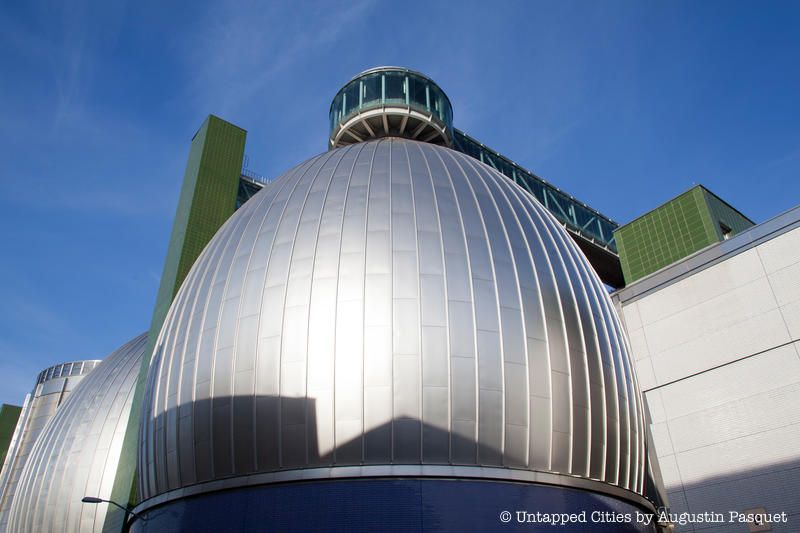
Another industry that has brought jobs to Greenpoint is the Newtown Creek Wastewater Treatment Plant, which opened in 2010 and is the largest of New York City’s 14 wastewater treatment plants. It treats not just the water and sewage of Greenpoint, but also the northern half of Brooklyn, parts of Queens, and Manhattan from 14th Street south on the west Side and from 72nd Street south on the east side.
The award-winning Digester Eggs were designed by the architects behind the Standard Hotel in the Meatpacking District and renovations of Carnegie Hall, the Brooklyn Museum, and the American Museum of Natural History. At night, the eggs are lit up in blue to make them more attractive. And tours of the facility, which the Department of Sanitation offers on holidays like Valentine’s Day and Halloween, sell out almost immediately.
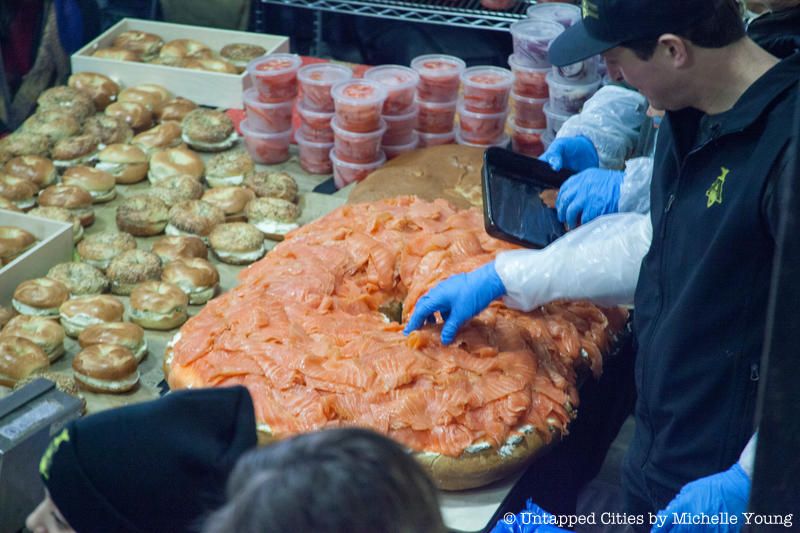
Aside from film production, tech companies, and sanitation, Greenpoint is also home to the Acme Smoked Fish factory, which produces smoked salmon, whitefish salad, trout, herring, and other fish specialties that you can find in supermarkets and appetizing shops all over New York City and beyond. Acme also made it into the Guinness Book of World Records for the world’s largest salmon lox bagel, which weighed in at over 200 pounds.
In a beloved Greenpoint tradition, for years, the Acme factory has opened its doors to the public on Friday mornings from 8 a.m. until 1 p.m. and sells its products at wholesale prices. In the past, lines have extended around the block as locals and New Yorkers from other neighborhoods flock to the factory for delicious fish at a deep discount. Because of COVID-19, the factory is no longer letting people inside, but you can pre-order your fish and pick it up curbside on Friday mornings.
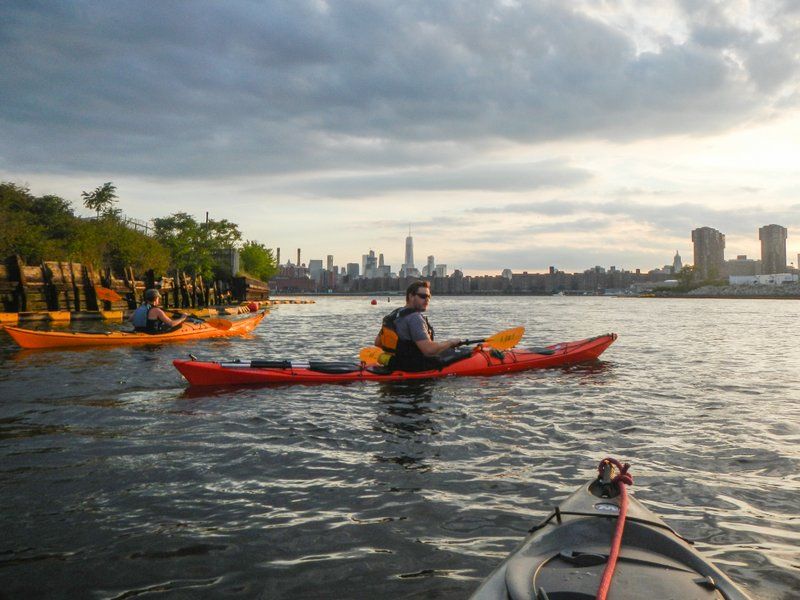
Though we wouldn’t recommend swimming in the East River, you can get out on the water in a kayak at the North Brooklyn Community Boathouse. The boathouse is a non-profit, volunteer-run community organization. Its mission is “to enable access to the waterways of NYC for its residents and thus promote human-powered boating and environmental restoration.”
In the past, the club has hosted events like an overnight circumnavigation of Manhattan, a solstice party, and film screenings. The aforementioned Broadway Stages offers part of their space to the boathouse.
Additional reporting was done by Michelle Young. Next, read about the top 10 secrets of Williamsburg, Brooklyn!
Subscribe to our newsletter